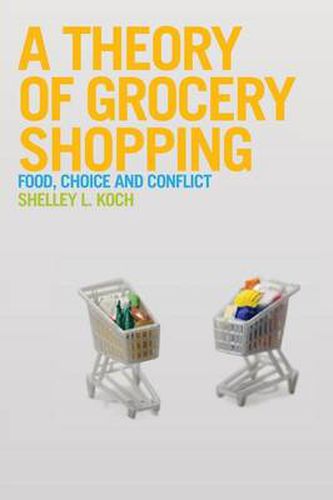Readings Newsletter
Become a Readings Member to make your shopping experience even easier.
Sign in or sign up for free!
You’re not far away from qualifying for FREE standard shipping within Australia
You’ve qualified for FREE standard shipping within Australia
The cart is loading…






Grocery shopping is an often ignored part of the story of how food ultimately gets to our pantry shelves and tables.
A Theory of Grocery Shopping explores the social organization of grocery shopping by linking the lived experience of grocery shoppers and retail managers in the US with information transmitted by nutritionists, government employees, financial advisors, journalists, health care providers and marketers, who influence the way we think about and perform the work of shopping for a household’s food.
The author provides insight into the contradictory messages that shape how consumers provision their households, and details how consumers respond to these messages. The book challenges the consumer choice model that places responsibility on the shopper for making the right choice at the grocery store, thereby ignoring the larger social forces at work, which determine what products are available and how they get to the shelves.
$9.00 standard shipping within Australia
FREE standard shipping within Australia for orders over $100.00
Express & International shipping calculated at checkout
Grocery shopping is an often ignored part of the story of how food ultimately gets to our pantry shelves and tables.
A Theory of Grocery Shopping explores the social organization of grocery shopping by linking the lived experience of grocery shoppers and retail managers in the US with information transmitted by nutritionists, government employees, financial advisors, journalists, health care providers and marketers, who influence the way we think about and perform the work of shopping for a household’s food.
The author provides insight into the contradictory messages that shape how consumers provision their households, and details how consumers respond to these messages. The book challenges the consumer choice model that places responsibility on the shopper for making the right choice at the grocery store, thereby ignoring the larger social forces at work, which determine what products are available and how they get to the shelves.